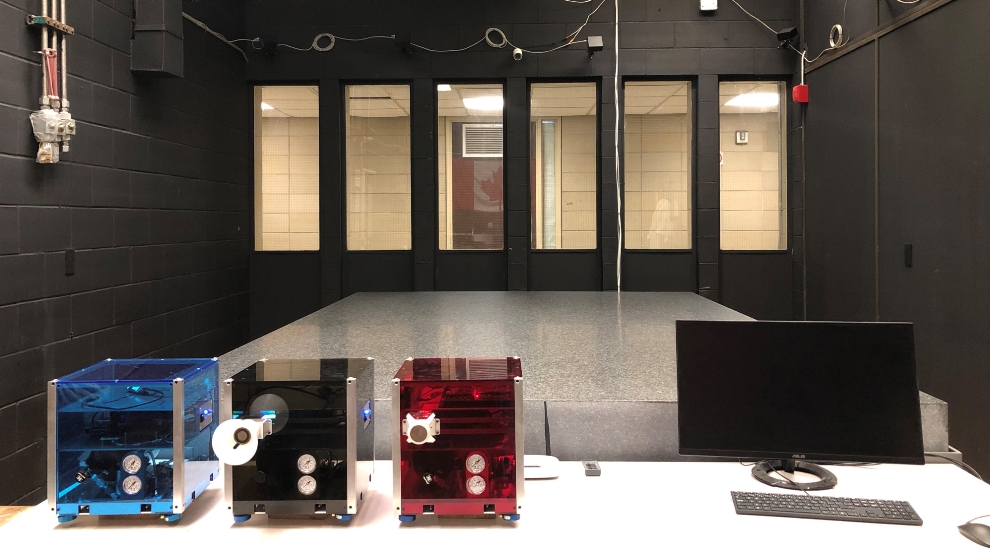Using simulated satellites floating on air above a granite slab, Carleton University’s Autonomous Spacecraft Robotics capstone team has shown that a combination of computer vision and artificial intelligence-enabled flight control makes autonomous satellite docking and maneuvering possible.
Supervised by Carleton associate professor Steve Ulrich and led by Carleton engineering student Sydney Moses and her student team, video of the experiment posted on LinkedIn shows the docking satellite successfully going past an obstacle and linking with a slowly spinning target vehicle.
The purpose of this project is to develop autonomous, self-piloted spacecraft that can link up to and then deorbit space debris safely. “The goal is to do this in a way that is collision-free,” said Professor Ulrich. “The last thing you want to do in space is to make the problem worse in bumping into the target you’re after and then cause a multitude of space debris”
To develop the systems needed to make autonomous spaceflight possible, “we run the experiments in the lab, we make sure the platforms are working, we troubleshoot through any issues that come up and we help the teams to integrate all of their work together as best we can,” Systems team lead Sydney Moses said.
Other teams on the project include Computer Vision, “which is focussed on being able to autonomously pull locational data from the target without touching it,” said student Hayden Arms; Control to position the retrieval spacecraft to the target “as quickly and cleanly as possible without overshoot or generating space debris,” said student Kristian Delaney; and Path Planning to develop the “algorithm that accomplishes what we want it to,” said student Parker Stewart.

Here’s how it all comes together: “We have to determine the motion of the target object using computer vision,” Professor Ulrich said. “The information determined by computer vision is then fed to the Path Planning team, whose responsibilities are to calculate in real time the best trajectory to perform the rendezvous and docking manoeuvre while avoiding the obstacle. Then that information is fed to the Control team who is responsible for moving the spacecraft around using thrusters to make sure that the actual trajectory follows the desired path as closely as possible. And the Systems team is responsible for integrating all of these pieces together.”
Although Carleton University’s Autonomous Spacecraft Robotics capstone team is still in the research phase of its project, the team’s results to date are attracting serious space industry interest.
“We just landed a big R&D contract with the German Aerospace Center to not only do some validation in our lab, but do some higher end validations in their lab, which is a six degrees of freedom lab using robotic arms to emulate the motion of both objects as they would be in space,” said Dr. Ulrich. “They have close ties with the European Space Agency, so my hope is that through them we would be able to secure an orbit demonstration eventually. That won’t be for this year or this capstone. This is a future objective and hope that I have.”
 SpaceQ Space news and analysis.
SpaceQ Space news and analysis.

